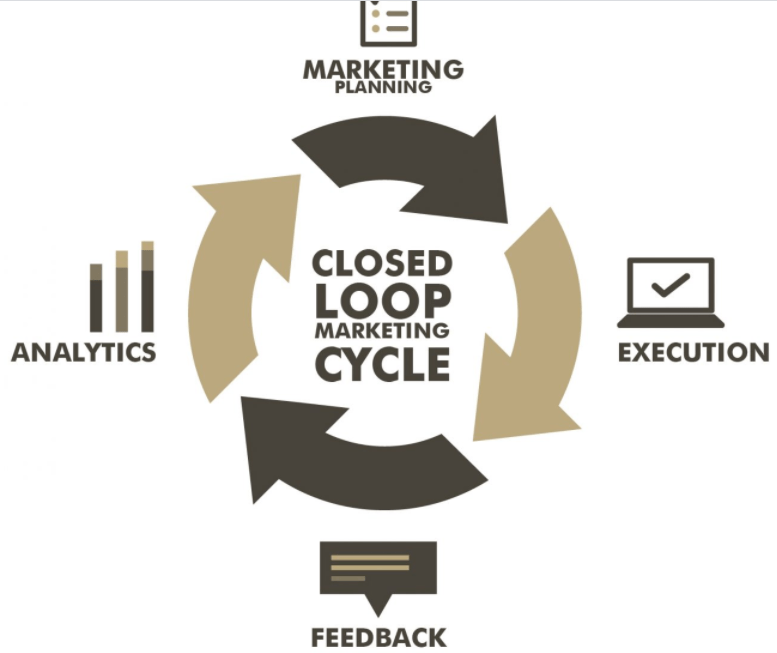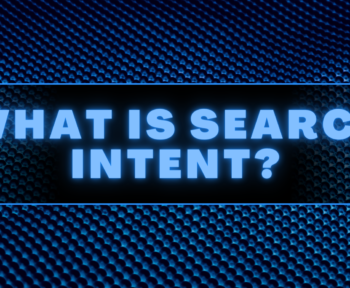We feel that the principles that apply in closed-loop marketing probably do not apply in the medical technology and life sciences industry.
The procurement methodology and decision-making process involving multiple parties and levels of authority in the pharma industry is longer and more complex than other sectors such as the FMCG (to provide polar opposite). But the principles applied in closed-loop marketing can still be applied to the pharma marketer.
Table of Contents
What is Closed-loop marketing?
The video above clearly explains what is closed-loop marketing.
Closed-loop marketing is a form of marketing that relies on data and insights. Simply put, “closing the loop” means that the sales team reports to the marketers what happened to the leads they received, which helps marketers understand their best and worst lead source.
Closed-loop marketing shows how your customers have found your company. They track their journey from the first visit to your website to their final customer conversion, which then becomes the basis for the next customer journey. This is a method of compiling large amounts of data into easy usage reports that profile your company customers. This process can be fully automated by automation software or tracked with a well-managed CRM.
Most marketers say they have already done that, but if you go back and examine whether you can get the most out of sales/marketing collaborations, you will find that there are still a lot of stones left unturned.
Do you use the same CRM for pipelines and opportunities? Do you have regular joint meetings with both sales and marketing? If not here’s a new product just for you
The diagram below Revenue Architects is a great example of how different business processes (in this case Automation, Business Intelligence, and Omnichannel Marketing, ) are aligned in a linear process that the company will repeat as it moves towards the future sales and marketing. Collects more data to inform campaigns. The process is threefold: launching a campaign, optimizing a new campaign startup based on past campaign experience and previous campaign experience!
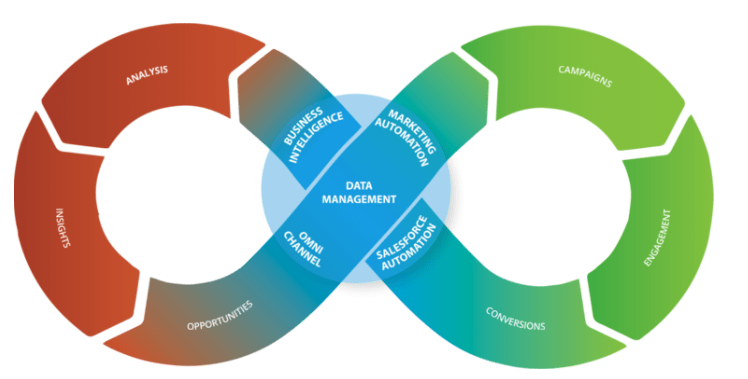
Why Closed-Loop Marketing?
As B2B business marketers, it is our job to put the right people in front of the right people to sell the product. If that happens, you’re done.
Therefore, we work with the notion that you have the right people and that your company employs the best, most passionate, and powerful salespeople in the business. We need to sell the right products to the right people in front of them. That’s why closed-loop marketing is so important.
Understanding what worked and what didn’t from your vendors. That last chance is to take the time to understand why it hasn’t changed. Closing the loop between sales and marketing through proper consideration of metrics (good and bad) will accelerate your marketing impact and help keep better leads in front of marketers.
Sure, closed-loop marketing can seem like just another meet-and-greet process to add to an already busy schedule. But the benefits are well documented and promoted by some fast-paced brands. Hubspot reports that brands that use closed-loop marketing and reporting may see the following benefits:
- Increased exchange rate.
- Low marketing costs.
- customer experience.
- Improved leadership management practice.
- Enhanced ROI analysis.
Once you understand the campaigns, channels, and workflows that drive conversions, you can focus your efforts on emulating them in your marketing.
How Closed-Loop marketing works?
Closed-loop marketing typically works in 4 steps:

Step 1: The visitor visits your site and the cookie is set in their referral source
This is the entry point to your closed-loop system. As you progress through the sales and marketing phases, the cookie allows you to trace them back to the appropriate channel. For example, you can trace them back to the original source, whether they came to your site from a URL you used in a trade show, email marketing campaign, or a print collage distributed during a search term.
How this data might be based on your marketing analytics software. Below you will find a screenshot of Hubspot traffic through the channel provided to us by the Marketing Analytics tool for Hubspot’s software. By looking at this data, we can identify trends and compare channels, because each color represents a different marketing channel, such as email, search, and social media. We know our most valuable traffic resources and can work to optimize. Who is doing poorly?
The easiest way to close the loop is to make your website the hub of all your marketing activities. Organic search, social media marketing, email marketing, referral links, paid searches and even offline promotions should also be filtered through your website. After someone visits your website, you can place a cookie on them and start tracking their activity.
Most web analytics systems allow you to track traffic sources such as search terms or reference websites, but you need to take a step forward to make sure you specify your leads for the right marketing programs. Doing. To do this, you must assign a tracking URL to each marketing campaign that sends traffic to your website.
Step 2: The visitor browses your website and the cookie tracks the visitor’s movements
When you attract traffic and detect where that traffic is coming from, you need to track the behavior of those visitors. What page are they looking at? What is the trajectory of their actions? Such insights explain the way it can help you optimize from fast visitors to principals or for visitor-to-customer conversions. Learn about CRO from here.
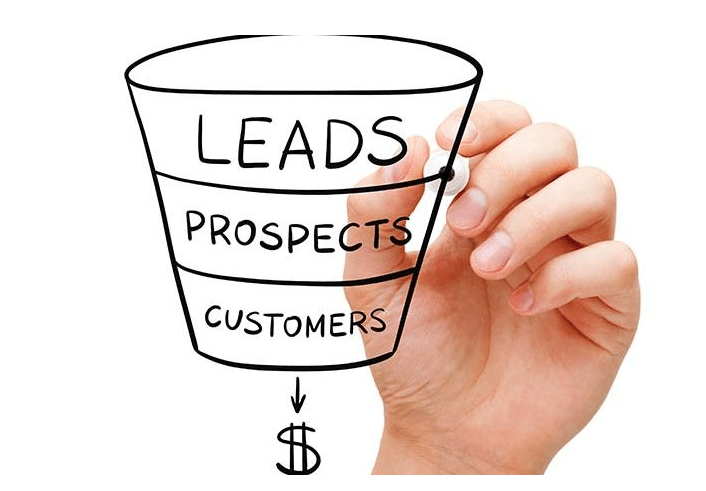
This is the hardest part of closed-loop reporting: make sure you can connect the visitor
With their key information after the sessions are converted into a form. Without this component, you would have two separate databases – one with anonymous visitor history and the other with important information. As a result, you will not be able to reconnect those leads to the relevant marketing source.
For this to work for you, you need to do something very technical on the back of your analytics platform or start using some software that works for you. There are already some software providers who have figured out how to do this and there is no point in rediscovering the cycle. (Full disclosure: Hubspot software allows you to run closed-loop reporting.) Here’s a screenshot of Hubspot’s Prospect Tool, which tracks visitor’s activity (while they are still anonymous) and provides information on social media accounts.
Step 3: The visitor becomes the lead by filling out and submitting the lead-capture form
In order to monetize the traffic you receive and send qualified opportunities to your sales team, you need to turn visitors into leads. You can do this by sending incoming traffic to landing pages, making it possible to visit information and gather more information from your visitors.
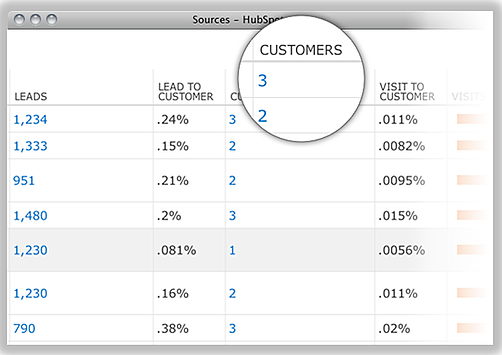
In addition to knowing where your visitors are coming from, you also need to know who they are. It is important to close the loop and reconnect closed clients to their entry source. The way to get this information is to direct website visitors to the landing page with the submission form (also known as the lead-capture form). Learn about KPIs from here
After visitors fill out this form, you will have all the contact information you asked for: name, email, phone number, etc. As a best practice, you should send most of your traffic to landing pages and forms. Your lead database can go up. You can learn more about creating great landing pages in this ebook.
Step 4: The lead becomes a customer and is credited to the original source
Now it’s time to find out how these visits have turned into sales. Which of your marketing channels has contributed the most customers? Are there ways you can adapt the process for other sources? Closed-loop marketing allows you to identify the activities that bring the highest (and least) revenue.
To do this, you need to look at all the leads your sales team has closed and give credit to their actual marketing activities. If everything is set up correctly in one to four steps, it should be a relatively simple process. For most mid-sized businesses, the easiest way to achieve this is through your Customer Relationship Management (CRM) system.
For small businesses, you can do this more manually using the spreadsheet. Here is a screenshot of HubSpot analysis that provides insights on customer acquisition from various marketing resources such as email marketing, social media, and referrals.
Benefits of Closed-Loop Marketing

Intelligence can help marketers collect conversions they can collect from closed-loop reporting, or highlight pages visited by visitors before converting to leads or customers. Understanding a website’s conversions can help marketers identify their own most effective pages. By doing so, they can learn a great deal about why those pages (or not) are effective and apply this information to improve poorly performing web pages and other aspects of their marketing.
Closed-loop marketing allows you to maintain coordination between sales and marketing and to define activities between the two segments. Other benefits of integrating your marketing software and CRM solutions include the ability to implement sales assignment rules, lead scoring systems, lead breeding campaigns, custom lead scoring, and monetary goal settings. To learn more about why closed-loop marketing is beneficial to marketers, see this post.
Hope! you find this post helpful. Don’t forget to share and subscribe. Thank You.

